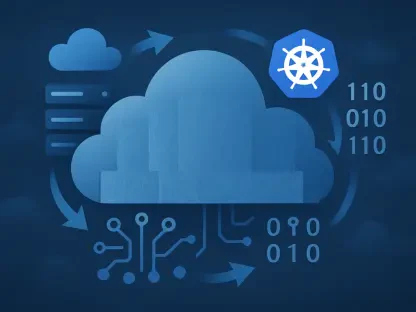In today’s rapidly evolving business landscape, companies are under increasing pressure to modernize their tax operations. The convergence of economic shifts, political changes, and stringent regulatory requirements has made it imperative for businesses to adopt more efficient and flexible tax systems. Cloud migration and integration offer a promising solution to these challenges, enabling businesses to streamline their tax functions and focus on strategic initiatives.
The Necessity of Tax Modernization
Economic and Political Pressures
Businesses are currently facing unprecedented economic and political pressures that are straining traditional tax systems. Globalization has expanded markets but also introduced complexities in trade and taxation that many companies were not initially prepared to manage. Concurrently, trade wars and shifting economic policies among major economic players have further complicated the tax landscape, causing businesses to constantly adapt to avoid penalties and ensure compliance.
These global dynamics necessitate swift and effective responses from tax departments, which are often limited by the capabilities of outdated tax systems. As companies expand into international markets, the need for dynamic and responsive tax solutions becomes even more critical. Traditional tax systems struggle to provide the agility needed to keep up with these fast-paced changes, often leading to inefficiencies and compliance challenges. Therefore, the pressure to modernize and adopt more adaptive systems has never been more urgent.
Regulatory Scrutiny and Compliance Demands
The regulatory landscape is also becoming increasingly aggressive, with governments worldwide tightening their tax regulations. This heightened scrutiny demands more accurate and timely tax reporting, placing significant strain on traditional tax systems. As tax authorities leverage technology to enhance their oversight capabilities, businesses must also adopt advanced solutions to meet these rising compliance demands efficiently.
Modernizing tax operations through cloud solutions can help businesses stay ahead of these regulatory requirements. Cloud-based tax systems provide real-time data access, enhanced accuracy, and automated reporting capabilities, reducing the risk of non-compliance and the associated penalties. Moreover, these systems are more adept at handling the frequent changes in tax laws and regulations, ensuring that companies are always operating within the legal framework. This proactive approach to compliance not only mitigates risks but also fosters a culture of transparency and accountability within the organization.
Benefits of Cloud Migration
Simplifying Operations
Migrating tax processes to the cloud significantly simplifies operations by replacing outdated, complex, and costly legacy systems. Cloud solutions offer faster processing times, greater flexibility, and reduced maintenance costs, allowing tax professionals to focus on more strategic tasks rather than being bogged down by infrastructure management. This shift from manual, time-consuming processes to streamlined, automated workflows enables tax departments to operate more efficiently and effectively.
The simplification of operations through cloud migration also facilitates better data management and integration. Cloud platforms centralize tax data, providing a single source of truth that enhances accuracy and consistency across the organization. This centralization reduces the likelihood of errors and discrepancies, improving the overall quality of tax reporting. Additionally, cloud solutions enable seamless integration with other business systems, such as ERP and financial management platforms, further streamlining tax operations and ensuring data consistency.
Enhancing Flexibility and Scalability
Cloud solutions provide unparalleled flexibility and scalability, enabling businesses to adapt to changing tax requirements quickly. Whether it’s expanding into new markets or adjusting to new regulations, cloud-based tax systems can scale up or down as needed, ensuring that businesses remain compliant and efficient. This flexibility is particularly valuable in today’s dynamic business environment, where rapid changes are the norm rather than the exception.
The scalability of cloud solutions also supports business growth and expansion. As companies increase their global footprint, they need tax systems that can easily accommodate the complexities of operating in multiple jurisdictions. Cloud-based platforms offer the scalability needed to manage diverse tax requirements, from local compliance to cross-border transactions. This scalability ensures that businesses can maintain efficient tax operations regardless of their size or geographic reach, providing a solid foundation for sustained growth.
Challenges of Cloud Adoption
Public vs. Private Cloud Options
One of the primary challenges of cloud adoption is choosing between public and private cloud options. Public clouds offer cost savings and ease of use, making them an attractive option for many businesses. However, they may not provide the level of control and security required for sensitive tax data. On the other hand, private clouds offer greater control and enhanced security measures, but they can be more expensive and complex to manage. Businesses must carefully evaluate their needs and regulatory requirements to make the right choice.
The decision between public and private cloud options is often influenced by the specific needs of the organization. For instance, companies with stringent security requirements or those operating in highly regulated industries may prefer private clouds for their enhanced security capabilities. Conversely, businesses looking for cost-effective and scalable solutions might opt for public clouds. In some cases, a hybrid approach that combines elements of both public and private clouds can provide the optimal balance of cost, control, and security, allowing companies to leverage the benefits of both options.
Modernizing Legacy Systems
Transitioning from legacy systems to cloud-based solutions can be a daunting task, particularly for businesses that rely on mission-critical systems deeply integrated into their operations. Modernizing these systems requires careful planning and execution to ensure a smooth transition without disrupting business processes. This often involves significant investments in time, resources, and expertise to successfully migrate data and applications to the cloud.
The modernization of legacy systems is not just about technology; it also involves a cultural shift within the organization. Employees must be trained to use new cloud-based tools and processes, and existing workflows must be adapted to fit the new environment. Change management is a critical component of this transition, ensuring that all stakeholders are aligned and committed to the modernization efforts. Despite these challenges, the long-term benefits of cloud migration, including improved efficiency, scalability, and compliance, make it a worthwhile investment for businesses looking to stay competitive in the digital age.
Compliance and Security Issues
Compliance and security are major concerns when migrating to the cloud. Businesses must ensure that their cloud solutions meet all regulatory requirements and provide robust security measures to protect sensitive tax data. This involves working closely with cloud providers to implement the necessary safeguards and compliance protocols. Failure to address these issues can result in significant risks, including data breaches, non-compliance penalties, and reputational damage.
To mitigate these risks, businesses should adopt a comprehensive approach to cloud security and compliance. This includes conducting thorough risk assessments, implementing stringent access controls, and regularly monitoring and auditing cloud environments. Additionally, organizations should choose cloud providers with a proven track record of security and compliance to ensure that their data is in safe hands. By prioritizing compliance and security, businesses can confidently migrate to the cloud while protecting their sensitive tax information and maintaining regulatory compliance.
Complexity in Tax Technology Stacks
Proliferation of SaaS Applications
The rise of Software as a Service (SaaS) applications has led to a fragmented tax technology stack, where different solutions address various tax functions independently. While these applications can quickly resolve specific tax issues, they often operate in silos, complicating the seamless flow of information and tax compliance. This fragmentation can lead to inefficiencies, increased risk of errors, and challenges in maintaining a cohesive and accurate tax reporting system.
As businesses adopt multiple SaaS applications to address specific tax needs, they may inadvertently create redundancies and overlaps in their tax technology stack. This can result in a lack of integration and coordination among different tax functions, making it difficult to achieve a unified and streamlined tax process. Additionally, managing multiple standalone applications can be resource-intensive, requiring significant time and effort to ensure all systems are up-to-date and functioning correctly. To overcome these challenges, businesses need to adopt a more integrated approach to tax technology.
Need for Unified Tax Solutions
To address the complexities introduced by multiple SaaS applications, businesses need a unified tax technology platform that consolidates various tax functions into a single system. Integrated solutions like Thomson Reuters ONESOURCE provide a comprehensive platform for managing tax compliance, enhancing automation, and improving data accuracy. By unifying tax processes, these platforms simplify operations, reduce manual intervention, and promote strategic clarity.
A unified tax solution offers several benefits over fragmented systems. Firstly, it enhances data consistency and accuracy by providing a single source of truth for all tax-related information. This reduces the risk of errors and discrepancies, ensuring that tax reporting is always accurate and compliant. Secondly, a unified platform promotes collaboration and information sharing among tax and finance teams, streamlining workflows and improving efficiency. Finally, integrated solutions provide advanced analytics and reporting capabilities, enabling businesses to gain valuable insights and make informed decisions based on real-time data.
Thomson Reuters ONESOURCE: A Comprehensive Solution
Integration with Cloud ERP Systems
Thomson Reuters ONESOURCE integrates seamlessly with cloud ERP systems, offering a comprehensive solution for modernizing tax workflows. This integration centralizes tax functions, reduces manual processing, and enhances operational efficiency. By leveraging cloud technology, ONESOURCE provides a robust platform for managing tax compliance across multiple jurisdictions, ensuring that businesses can maintain accurate and timely tax reporting regardless of their geographic reach.
The integration of ONESOURCE with cloud ERP systems also facilitates better data management and visibility. Tax professionals can access real-time data and analytics, enabling them to make informed decisions and respond quickly to regulatory changes. This enhanced visibility also supports better tax planning and risk management, ensuring that businesses can proactively address potential issues before they escalate. By providing a centralized and integrated platform, ONESOURCE helps businesses streamline their tax operations and achieve greater efficiency and accuracy.
Automation and Strategic Clarity
ONESOURCE enhances automation by streamlining tax processes and reducing the need for manual intervention. This allows tax professionals to focus on strategic tasks, such as tax planning and risk management, rather than being bogged down by routine data entry and compliance tasks. The platform’s advanced analytics and reporting capabilities provide valuable insights, enabling businesses to make informed decisions and stay ahead of regulatory changes. This strategic clarity is crucial for navigating the complex and ever-evolving tax landscape.
The automation capabilities of ONESOURCE also contribute to improved accuracy and consistency in tax reporting. By reducing the reliance on manual processes, the platform minimizes the risk of errors and ensures that all tax data is accurate and up-to-date. This not only enhances compliance but also provides a solid foundation for effective tax planning and decision-making. Furthermore, the automation of routine tasks frees up valuable time and resources, allowing tax and finance teams to focus on more high-value activities that drive business growth and success.
Scalability and Global Coverage
Designed for businesses of all sizes, ONESOURCE offers scalability and comprehensive global tax coverage. This feature is particularly beneficial for enterprises operating in multiple locations, as it consolidates tax processes into a single manageable path. The platform’s robust data management capabilities ensure accurate and timely tax reporting, regardless of the jurisdiction, providing businesses with the confidence that they are always compliant with local tax laws and regulations.
The scalability of ONESOURCE also supports business growth and expansion, allowing companies to easily manage increasing tax complexities as they enter new markets. Whether a business is expanding within its home country or branching out internationally, ONESOURCE provides the flexibility and capability needed to handle diverse tax requirements. This global coverage ensures that businesses can maintain efficient and compliant tax operations, no matter where they operate, and provides a solid foundation for sustained growth and success in today’s competitive market.
Embracing the Future of Tax Operations
Moving from Disparate Tools to a Unified Platform
Businesses are urged to transition from disparate manual and digital tools to a consolidated cloud-based tax platform. This integrated approach promises significant improvements in efficiency, accuracy, and scalability. By adopting a unified tax solution, companies can streamline their operations, reduce compliance risks, and focus on strategic growth. A unified platform eliminates the inefficiencies and challenges associated with managing multiple standalone systems, providing a more cohesive and effective approach to tax management.
The move to a unified tax platform also supports better collaboration and information sharing among tax and finance teams. With all tax-related data and processes centralized in one system, teams can work more efficiently and effectively, reducing the time and effort required to complete routine tasks. This enhanced collaboration also facilitates better decision-making, as tax professionals can access real-time data and analytics to inform their strategies and responses to regulatory changes. By embracing this integrated approach, businesses can achieve greater operational efficiency and position themselves for long-term success.
Driving Greater Value for Tax and Finance Teams
The adoption of cloud-based tax solutions like Thomson Reuters ONESOURCE enables tax and finance teams to drive greater value for their organizations. By automating routine tasks and centralizing tax functions, these teams can allocate more time to strategic initiatives, such as tax planning and risk management. This shift not only enhances operational efficiency but also positions businesses for long-term success by ensuring that their tax operations are agile, compliant, and strategically aligned with broader organizational goals.
The strategic benefits of cloud-based tax solutions extend beyond efficiency and compliance. By providing advanced analytics and reporting capabilities, platforms like ONESOURCE enable tax and finance teams to gain deeper insights into their tax data and identify opportunities for optimization and improvement. These insights can inform strategic decisions and help businesses identify areas for cost savings, risk mitigation, and growth. Ultimately, the adoption of integrated cloud-based tax solutions empowers tax and finance teams to drive greater value and contribute more meaningfully to the overall success of the organization.
Conclusion
In today’s rapidly evolving business environment, companies are increasingly pressured to update their tax operations. This is due to a convergence of economic fluctuations, political shifts, and strict regulatory requirements, which have made it more urgent than ever for businesses to adopt more efficient and adaptable tax systems. The transition to and integration with cloud-based solutions provide a promising answer to these challenges. By migrating to the cloud, businesses can streamline and modernize their tax processes, thus allowing them to dedicate more attention to strategic initiatives and core objectives. These cloud-based tax solutions offer enhanced flexibility, scalability, and accessibility, which are crucial for maintaining competitive advantage in a dynamic market. Additionally, the automation and data analytics capabilities of cloud platforms help to reduce errors and improve overall compliance. As companies continue to navigate intricate economic and political landscapes, embracing cloud technology for tax operations becomes not just beneficial but essential for sustained growth and efficiency.









